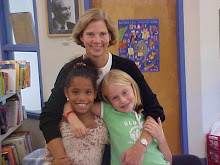His three main points are that values should take president over rules; that character is more important than behavior; and that giving kids examples from the books they read - of kids doing creative things that haven't been done before, are ways to develop creativity.
This is interesting to me. It speaks to the way we construct the school experience for our students and what we intend for them to gain from it. It is a question the Parker faculty is always trying to get to the root of - How do we develop creativity, empathy, and purpose in our students - skills that will serve them well for their entire lives?
We strive to inspire curiosity by posing interesting questions and by giving students the ways and means to explore the world around them and topics they become interested in. We set high expectations and let the children help develop rules, giving them the real responsibility (with adult support) to construct a kind and supportive community. We set up many experiences where learning has a purpose beyond the immediate classroom, by doing projects that have an impact on others: citizen science, teaching others, coming up with solutions to real world problems, community service. And everyone is immersed in the arts - music, dance, instruments, painting, dramatics, public speaking, design and many, many other creative practices.
We also give them time to play and to contemplate.
I like Grant's ideas and hope to expand even further on the question of developing creativity and innovators. On the evening of April 5 we are having a panel discussion, open to the public, about just this topic. We have some amazing thinkers lined up - Stay tuned - more information is coming!




















































